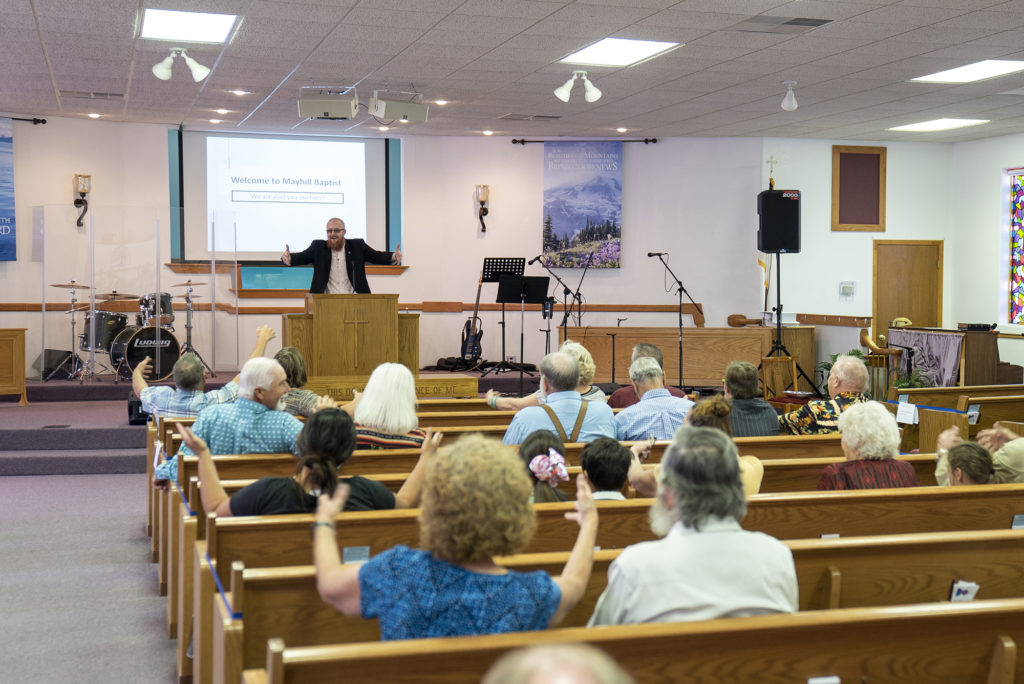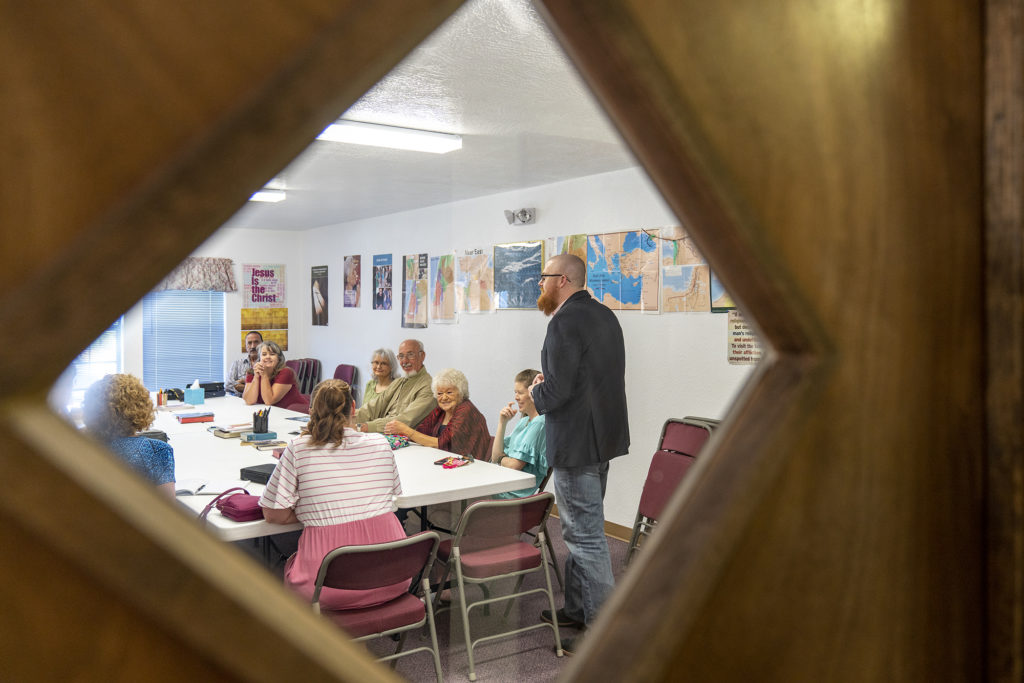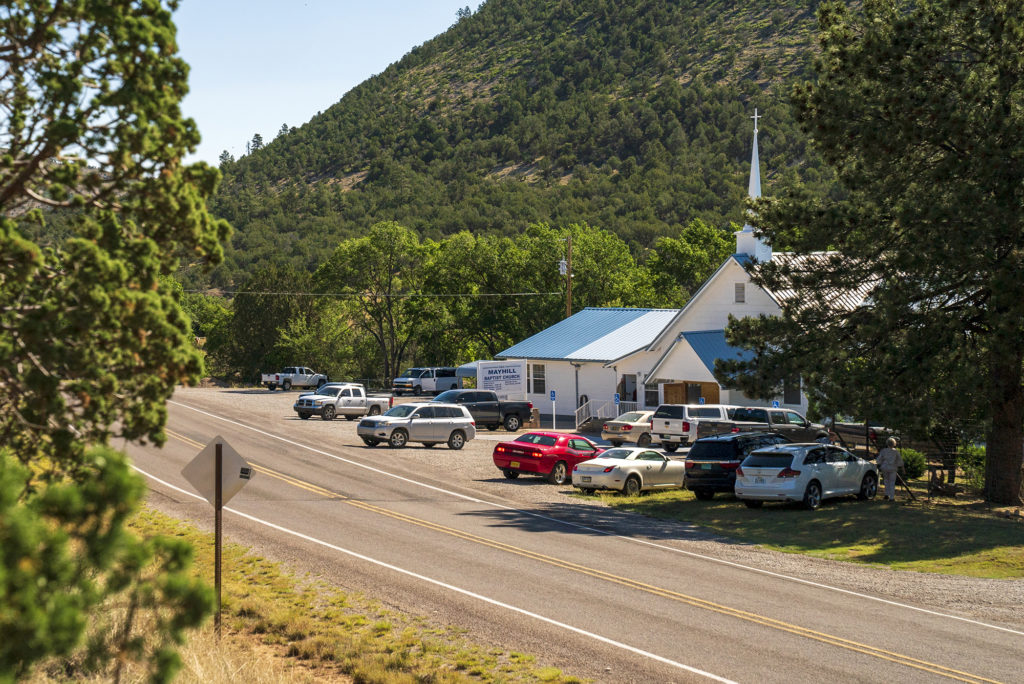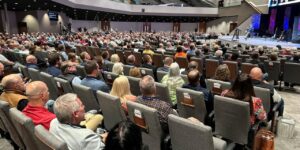
MAYHILL, N.M. – The distances involved in pastoring rural churches require a different paradigm from pastoring city churches, said Matt Henslee, pastor of Mayhill Baptist Church in the Sacramento Mountains of New Mexico.
He added that the even greater distances involved in fulfilling the Great Commission around the world require participation in the Cooperative Program, the way Southern Baptists work together to reach out with the Gospel and God’s love for all people.

“The Cooperative Program reaches out farther than we can as individuals or churches,” Henslee said. “When I look at building a house, there are certain things I wouldn’t be able to do. I could hit a nail but not do electricity. A house without electricity would be hard to live in but you could. However, without nails you couldn’t hold up the walls. Same with the Cooperative Program.
“Each church in their own way plays a part with the Cooperative Program. We all have an integral part in working together to advance God’s kingdom.”
Mayhill Baptist uses videos and personal testimonies to keep the Cooperative Program before the congregation. Speakers have included New Mexico’s two NAMB-funded church planting catalysts and international missionaries on stateside assignment.
“That helps,” Henslee said. “They can see and hear what CP is, rather than it just being a percentage of the budget. They see that and say, ‘I might not be able to go to Africa or plant a church, but I can give.’ Having the Cooperative Program in front of them gives them a reason to give. They see the reason and what that money can accomplish.”
Pastoring a rural church requires not so much strategy as it does presence, said Henslee, who eats a lot of fried chicken at the town’s only cafe. The café also is where he often studies when not visiting with other patrons.
“Having experienced the different taste of big city pastoring [in the Dallas area], I really feel at home in the rural context,” said Henslee, whose church draws members from a hundred-mile radius. “I like the pace of it. I like the fact if I’m going to make a hospital visit like to El Paso or Albuquerque, it takes planning and lots of windshield time.
“For me, doing that – the time in the car – you get to think, make calls and stops on the way to visit. It might be inconvenient, but practical for ministry when you’re out of the office. It has made me a better pastor in my opinion.”
Henslee drew from his experiences to coauthor “Replanting Rural Churches: God’s Plan and Call for the Middle of Nowhere,” a book released in August 2019.
Henlsee’s focus on missions and “presence” ministry includes volunteering in the community and at the “local” school, which is 10 miles out of town. The church also supports a food pantry that is available 24/7 and participates in the USDA’s “Farmers to Families” food box program. These efforts have grown the church to about 100 attendees in winter and up to 160 in summer, when the higher elevation draws RVing tourists.
When the Henslee family – wife Rebecca and four children – arrived in Mayhill in April 2017, “We ended up having a slew of grandparents, which was a blessing,” the pastor said in reference to Mayhill’s older members. “We poured into who we had and asked them about their fond memories of years gone by.”
He led the congregation, which was founded in 1903, with questions like “’Did you like it when kids were here?’” and statements like, “’We want to do what we can to be open and welcoming and move forward to the future. We’ll get stains in the carpet and we need to be OK with that. The stains, the cries and the growing pains reveal progress.’

“They took that on and ran with it. Over time we started to get a few more and it snowballed into more people. Just out of nowhere we went from six to seven young people to as many as 40 in kids ministry.”
It’s common, the pastor said, for members to ask someone in the community, “‘Has anybody told you today that God loves you?’ And invite them to church.”
In addition to allocating 15 percent of its budget for the Cooperative Program in 2019, Mayhill Baptist also gives to the Mountain Valley Baptist Association, New Mexico Baptist Children’s Home, Inlow Baptist Camp and others. The church’s missions support totals 53 percent of its budget.
“We support missionaries in Africa, Mexico, Papua New Guinea and Austria, and the Tinian Indian Baptist Church in Cuba, [N.M.],” Henslee said. “I also wanted us to have something relatively local so we could load a van and help with VBS or block parties.”
For that, Mayhill Baptist has partnered with First Baptist Church of Roswell, N.M., to plant River Valley church in Roswell, 90 minutes northeast of Mayhill.
“So now we can also go with our feet,” Henslee said. “We can have a more tangible ministry and partnership beyond just money.”
Mayhill Baptist is growing to the point where it might soon need more than one staff member to handle the needs of the congregation, but the church has chosen to allocate offerings to missions rather than additional staff.
“We’re running out of room and one of my greatest fears is that someone could fall through the cracks,” the pastor said. “I see a value of a church of 100-150 people. My prayer is to one day send a group to another church to replant it. Even though we’re reaching people from as far as Alamogordo to Artesia, there still are people on this mountain who need to be reached.”















